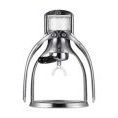The overall product mix can influence the gross margin if a company sells multiple products with different production costs and selling prices. A shift in sales towards higher-margin products will elevate the overall gross profit and vice versa. Gross profit is the total profit a company makes after deducting the cost of doing business. Gross profit margin, on the other hand, is the profit a company makes expressed as a percentage using the formula above. In order to calculate it, first subtract the cost of goods sold from the company’s revenue. Then divide that figure by the total revenue and multiply it by 100 to get the gross margin.
Calculating Gross Profit Margin
- Streamlining processes is one of the most efficient ways to improve gross margin.
- One way to interpret a company’s gross margin is to compare it to previous calculations and see how it’s trending over time.
- Lastly, stockouts, where a company runs out of a product before it can replenish it, are another crucial aspect of inventory management.
- On the other hand, the gross margin for manufacturing companies will be lower as they have larger COGS.
- For instance, if the gross margin is lower than anticipated or desired, businesses might consider increasing the price of their products or services.
- Holding onto inventory can lead to storage costs and, in certain cases, depreciation of goods.
They are two different metrics that companies use to measure and express their profitability. While they both factor in a company’s revenue and the cost of goods sold, they are a little different. Gross profit is revenue less the cost of goods sold, which is expressed as a dollar figure. A company’s gross margin is the gross profit compared to its sales and is expressed as a percentage. In essence, the importance of understanding the gross margin formula is to effectively interpret the financial health of a business. It provides insights into how well a company is managing its production costs in relation to its revenue.
The Difference Between Gross Margin and Gross Profit
On the other hand, a company with a unique value proposition or a differentiated product might enjoy higher pricing power and a healthier margin. For instance, let’s consider Apple Inc., one of the world’s most profitable companies. If Apple generates total revenue of $100 million through iPhone sales and incurs COGS of $60 million for producing those iPhones, their gross profit is $40 million ($100M – $60M). When calculating net margin and related margins, businesses subtract their COGS, as well as ancillary expenses. Some of these expenses include product distribution, sales representative wages, miscellaneous operating expenses, and taxes. To interpret this ratio, you can conduct a long-term analysis of the company’s gross margin trends over time or draw comparisons between peers and the sector average.
What’s the Difference Between a High and Low Gross Profit Margin?
The gross margin and net margin are frequently used together to provide a comprehensive overview of a company’s financial health. Where the gross margin only accounts for the COGS, net margin accounts for all indirect, interest, and tax expenses. These expenses can have a considerable impact on a company’s profitability, and evaluating a company only based on its gross margin can be misleading.
Tina wants to get a better idea of how expenses are affecting her company’s profit. Suppose we’re tasked with calculating the gross margin of three companies operating in the same industry. For instance, imagine a small retail store that purchases inventory from multiple suppliers. By negotiating better deals with suppliers, it can reduce its COGS, increasing gross margin without affecting product quality.
Analyzing customer demand and behavior can also help you identify areas for improvement in your product line or marketing strategy. Another way to increase sales is through promotional campaigns such as discounts or special offers that can incentivize buying behavior. There is one downfall with this strategy as it may backfire if customers become deterred by the higher price tag, in which case, XYZ loses both gross margin and market share.
This is reflective of your company’s ability to sell items at a profitable price. By understanding their gross margin, businesses can make informed decisions about pricing strategies, production costs, and overall profitability. This can result in higher profits and better financial health for the business. The second component is the cost of goods sold (COGS), which includes all the costs directly involved in producing the goods sold by a business. This might include raw materials, labour costs involved in production, and any other direct costs. For companies that operate internationally or source materials globally, currency exchange rates can greatly impact the cost structure and, in turn, the gross profit.
Gross profit margin is the percentage of your business’s revenue that exceeds production costs. In other words, it’s the percentage of the selling price left over to pay for overhead expenses. Generally put, a higher gross profit margin is perceived positively in practically all industries, since the potential for higher operating margins and net profit margins increases. Comparing gross and net margin shows the proportion of costs that consists of direct costs (COGS) versus other kinds of costs like operating expenses, interests, and taxes. By understanding the definition, example, formula, and gross margin calculation, you can compare your company’s financial performance to industry benchmarks. Implementing pricing strategies is also effective in improving a company’s gross margin.
Events like natural disasters, geopolitical issues, or global pandemics can disrupt supply chains, leading to increased costs. A resilient supply chain is crucial, but unexpected disruptions can still challenge gross margins. Rapid technological advancements can make certain products obsolete or less valuable. Companies might need to reduce prices to clear out inventory or to stay relevant, impacting the gross margin. Improving sales is one of the most effective ways to increase your gross margin.
For this, you need to compare the gross profit margins of different companies within the same industry. Companies strive for high gross profit margins as they indicate greater degrees nynab vs quickbooks online of profitability. When a company has a higher profit margin, it means that it operates efficiently. It can keep itself at this level as long as its operating expenses remain in check.
As such, it sheds light on how much money a company earns after factoring in production and sales costs. This means Tina’s business is doing a little below average, with an 18.75% gross profit margin. She might https://www.kelleysbookkeeping.com/ consider raising her prices or looking for ways to reduce direct costs without cutting quality. Gross margin also serves as an evaluation tool to assess the profitability of a company against its competitors.
Additionally, costs such as utilities, equipment maintenance, and factory leases play into the COGS. Gross profit margin is a vital metric that quantifies the proportion of total revenue that exceeds the cost of goods sold (COGS). However, multiple https://www.kelleysbookkeeping.com/author/ron-pearson/ factors can impact this figure, both internally and externally. Understanding gross margin is essential for investors, business owners, and financial analysts who seek to evaluate a company’s performance and compare it to industry standards.
Additionally, reducing marketing and advertising expenses without compromising product or service quality could help businesses save money. Additionally, knowing the factors that impact gross margin allows companies to adjust their operations strategically. Gross margin is commonly presented as a percentage, allowing for easy comparison of a company’s performance against its industry peers or historical data. So, as you can see, Proctor and Gamble’s gross margin is positioned between these two peers and well above the sector average.


























